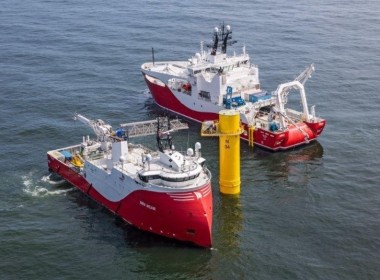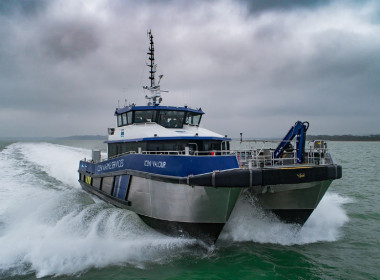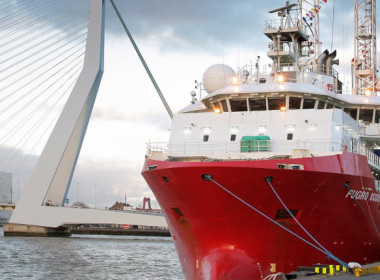FEATURE | UK-Irish partnership developing fish pen concept for use at offshore wind farm sites

A group of British and Irish companies have completed the latest phase of work on a new fish farming solution that seeks to address the safety, fish welfare, and cost competitiveness challenges associated with bringing aquaculture into open ocean environments.
Currently, fish and shellfish farms are located in sheltered bays and inlets, where production capacity is limited to the level that these water bodies can host sustainably. The project aims to make aquaculture possible even in areas that are already or soon to be occupied by offshore wind turbine arrays.
The project, called Inflatable Marine Products for Aquaculture Containment Technology (IMPACT), shows how novel flexible structures and inflatable beam elements can allow marine fish production at such ocean locations.
An innovative and environment-friendly approach

The project’s aims to offer benefits such as stable submergence for protection against parasites, algae and jellyfish, integration with state-of-art feed supply technologies with waste-recovery options, and reduction in port infrastructure and support vessel demands. The use of elastomeric and synthetic fibre materials in controlling the dynamics of moored structures in large waves also meant a reduced environmental impact.
IMPACT was funded by the UK Seafood Innovation Fund, building on an earlier feasibility study that defined a farm system architecture suitable for UK offshore ocean conditions. The IMPACT project was led by Scottish marine engineering company TTI Marine Renewables (TTI). The IMPACT partners have now delivered the front-end engineering design (FEED) for a sub-scale demonstration platform, called Net9-S, suitable for technical demonstration at the European Marine Energy Centre (EMEC) in Orkney. TTI was supported by Irish technology start-up Impact-9 Energy and Marine, Orkney test site owner EMEC, as well as project developer the Simply Blue Group, which led work on future commercial offshore site options and consenting matters. Subcontractors such as Orwell Offshore were also brought into the project to bring naval architecture and marine operations expertise.
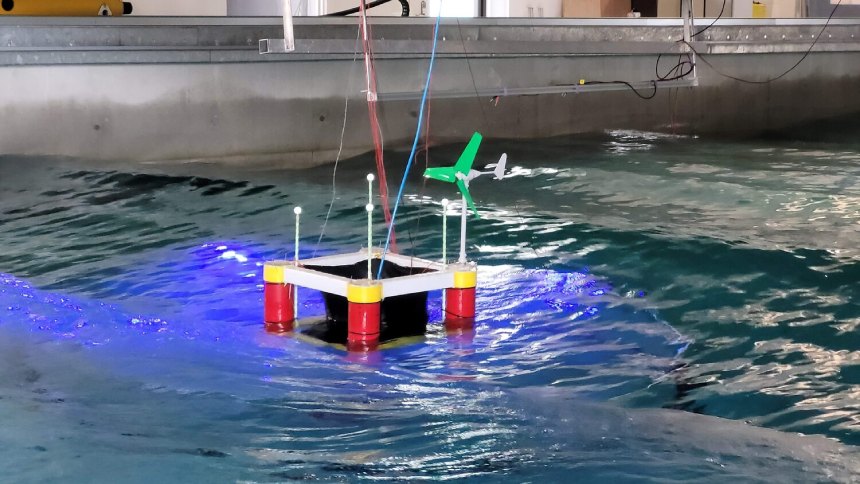
Working with Dublin Offshore Consultants (DOC) and fibre rope and flexible marine structures specialist Tension Technology International (TTI), Impact-9 refined the concept specification for a fish pen of 90 metres in diameter and 125,000 cubic metres in volume, resulting in a pen that is capable of producing 3,000 tonnes of salmon per year in 12 month grow-out cycles. The design considers the environmental conditions of operating in offshore Scottish zones over 60 metres deep. The study incorporated feedback from experts at the Scottish Association for Marine Science (SAMS), EMEC, and independent farming advisor Karl Scott of Maritime Aqua, in order to shape the concept and identify risks to be mitigated on the route to commercialisation.
Impact-9 has also completed a series of scaled laboratory tests at the Lir National Ocean Test Facility in Cork, Ireland. Impact-9 CEO John Fitzgerald said the aim was to show that the system can operate in fully open ocean conditions and keep operators and fish safe, but also to show that both the UK and Ireland enjoy expansive offshore zones of more intermediate exposure.
Future plans
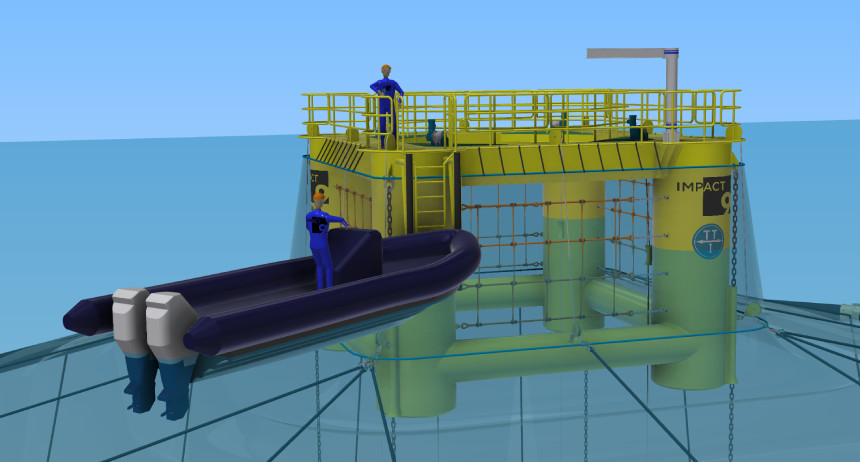
Future commercial offshore platforms based on Net9 will be positioned in water depths of more than 60 metres, with submerged containment volumes of up to 125,000 cubic metres, capable of producing up to 3,000 tonnes of fish worth about £15 million (US$) per annum. However, it was determined in the feasibility phase that an experimental sea trial will first be required in order to test the novel structural elements in a lower risk, unstocked technical demonstration, in advance of rolling out commercial farming operations. The Net9-S system specification and test site operations plan is now completed for this purpose, with the design completed to a level of detail that will allow the procurement of the demonstration project. This will be a reduced scale variant to be deployed unstocked initially and within the reduced scaled ocean environment test sites already available at EMEC.
The aim is to build market confidence in the solution before subsequent offshore deployments. Risks, including design-specific Failure Modes and Effects Analysis (FMEA), are being actively managed in order to demonstrate to end-users, regulators and third-party certification bodies that the proposed Net9 technology will be ready for commercial operations in open ocean conditions.
The next phase of the project will see the building and testing of the full Net9-S hardware leading to the deployment of the full system in an unstocked test deployment. The team is working with potential funders and end users to deliver this phase as well as to plan future commercial project opportunities.
Impact-9 is also looking at using a similar design philosophy for seaweed and shellfish farms.




